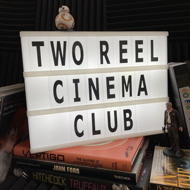For a film all about time loops, the new Indiana Jones picture Dial of Destiny sure seems interested in repeating the past. Harrison Ford returns for the fifth Indy movie, which is filled with daring chases, speeding trains, mysterious artefacts and troublesome Nazis. But how much does the film owe to its 1981 predecessor Raiders of the Lost Ark? We run them both through our projector this episode, and ask: just how similar are they? Can the new version match the textbook film-making of the original? Will it address some of the racism of Raiders’ stereotypes? And exactly how many vehicles does Indy steal and wreck in the course of an average day?
Plus an appearance by Tom Hanks on a rival podcast, a quick blast of Nick Drake, a trip to the Temple of Doom, a shot of vitamins from our sponsor, and a sensible question about why the ancients could build elaborate traps that work for two thousand years but today a phone battery only lasts for eight hours.
If you enjoyed the show, find us on social media:
Instagram: @tworeelcinemaclub
Contact us at tworeelcinemaclub at gmail.com
Or come to our website, where we’ll be writing about the movies we cover in the show and a few more things besides: https://tworeelcinemaclub.com
